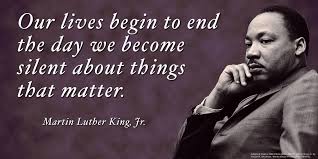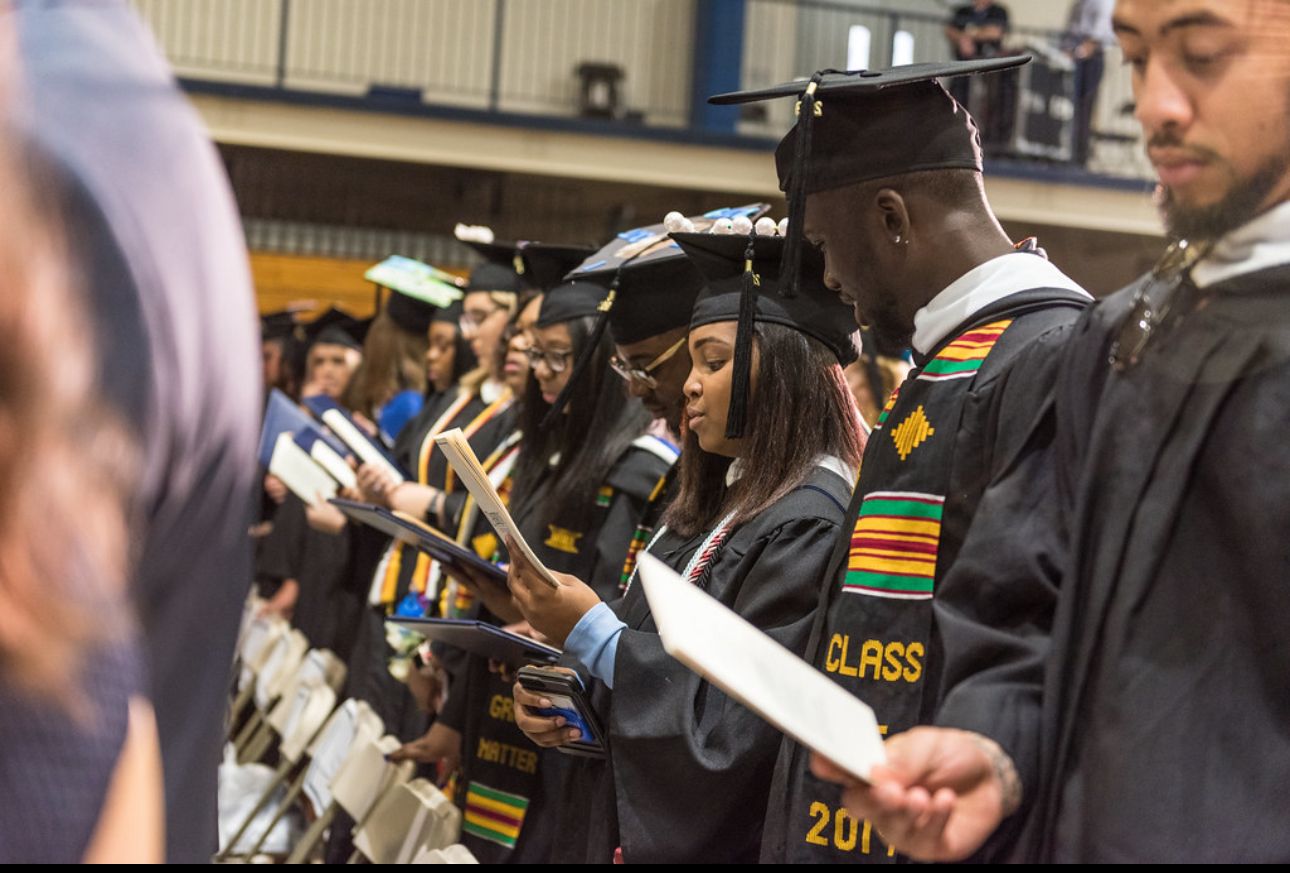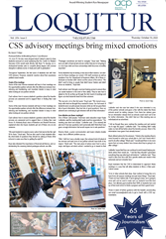Cabrini was not always the diverse school it is today, but the Loquitur covered issues that impacted African Americans’ daily life.
When Martin Luther King Jr. died in 1968, the story, “King: Profile in Peace,” was used as a lesson for students to be to new Black students who would be attending the university that fall. In later years, The Loquitur featured stories focusing on “Historic Black Americans” and “Black Education.”
Racism at Cabrini

In 1989, when a racist incident toward a minority student on campus came to light, the Loquitur staff struggled with how to cover it.
Rachel Slaughter, Class of ’89, said, “We had some sort of a racial issue at Xavier Hall, there was some racial slurs written somewhere and I wanted to cover that but that wasn’t on the Loquitur’s agenda and if it was, it wasn’t a story given to me. I do remember that it was covered in a brief way, but in a way that I wanted to expand and bring more awareness to the racial intolerance that some of us felt on campus.”
The story, “Racism plagues campus again,” which reflected on what happened with the racist incident, was written around the same time as the story, “Minority enrollment hits record low,” which reflected on Black students not wanting to attend the university because of the outbreak of racist incidents.
Slaughter said, “As a person of color, I spoke up and wanted to do more coverage of local and national events that involved people of color. That was always my push as a person who thought of herself as a rebel or very socially and racially aware.”
She continued, “The issue that I covered was that there wasn’t enough integration for people of color on the campus. I felt like I was missing some sort of acceptance during that time.”
Getting coverage of the Black issues was specifically not on the agenda for the Loquitur, but Black editors pushed that agenda for the African American community that was growing in population at Cabrini from 1989-1999, to show that they are heardand understood as well.
The change in coverage
The Loquitur’s focus shifted as the years went by, especially around 2020 when the awareness of racism and police brutality against African Americans opened everyone’s eyes
Black Loquitur editors and reporters such as Sydnee Reddy, Troi Patrick, Toniann Gooden, and many more, wrote stories or reflections of who they are as Black students at a predominately white school.
Racism wasn’t the only topic that was covered regarding the African American experience; the paper also covered what the university offered for their BIPOC students.

Patrick’s story, “Being a Black Student Union board member,” showed the importance of being a part of a club that reflects who she is, and provides a welcoming place for everyone like her.
Patrick, (’21), said, “During the time I attended Cabrini, I was doing the Loquitur and the Black Student Union. I felt like it was important to me to be in a group that had a presence on campus that was meant to uplift Black students on the Cabrini Campus.”
The Loquitur helped Black editors be a voice for other Black students on campus who felt unseen.
In 2021, Reddy (’23), wrote “Being Black on a campus that cut Black studies,” reflecting on what other Black students may been feeling. Reddy won the award of the 2022 Keystone Media Award for this story.
Reddy said, “When the decision was made to cut Black studies, I felt unseen as a Black student. It was a Perspectives opinion editorial, so it was all my thoughts wrapped in a story. Plus, I believe I was speaking for the majority of Black students on campus.”
The Loquitur may have left the African American experience unnoticed for a while, but ultimately, it helped Black writers speak up for what they believed in and what others were afraid to say.






